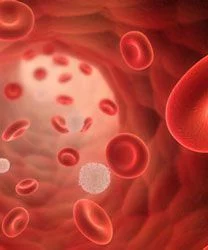Article
Zanubrutinib Approved in Canada for Waldenström Macroglobulinemia
Author(s):
Health Canada has approved the BTK inhibitor zanubrutinib for the treatment of adult patients with Waldenström macroglobulinemia.

Health Canada has approved the BTK inhibitor zanubrutinib (Brukinsa) for the treatment of adult patients with Waldenström macroglobulinemia, according to an announcement from BeiGene, Ltd.1
The regulatory decision is based on data from the phase 3 ASPEN trial (NCT03053440), which showed that zanubrutinib was linked with a numerically higher complete response or very good partial response (CR + VGPR) rate, as well as clinically meaningful advantages in safety and tolerability vs ibrutinib (Imbruvica) in patients with Waldenström macroglobulinemia.2 The combined CR + VGPR rate in the intent-to-treat (ITT) population was 28.4% with zanubrutinib (95% CI, 20%-38%) vs 19.2% with ibrutinib (95% CI, 12%-28%; P = .0921).
Despite this benefit, however, the primary end point of statistical superiority regarding VGPR or better had not been met.
“[Zanubrutinib] is a highly selective BTK inhibitor designed to provide deep and durable responses for patients with hematologic malignancies while reducing the frequency of certain [adverse] effects,” Josh Neiman, chief commercial officer for North America and Europe at BeiGene, Ltd, stated in a press release. “With today’s approval, we are looking forward to bringing this potentially best-in-class BTK inhibitor to Canadians affected with Waldenström macroglobulinemia.”
For the phase 3 ASPEN trial, investigators enrolled patients with a histologic diagnosis of Waldenström macroglobulinemia who did not previously receive any BTK inhibitors. Patients had to meet at least 1 criteria for treatment initiation. If they were treatment naïve, they had to have been ineligible for standard chemoimmunotherapy, in order to participate.
Patients were split into 1 of 2 cohorts: the first cohort comprised patients who harbored activating MYD88 mutations (n = 201), while the second cohort included patients with a MYD88 wild-type mutation (n = 28); 164 and 23 patients, respectively, had relapsed/refractory disease. Patients in cohort 1 were randomized 1:1 to either arm A where they received zanubrutinib at 160 mg (n = 102) or ibrutinib at 420 mg (n = 99). Treatment was administered until disease progression. Patients in cohort 2 went on to arm C of the trial, where they received zanubrutinib at 160 mg until progressive disease (n = 28).
The primary end point of the trial was to compare the efficacy of zanubrutinib with ibrutinib; to do this, investigators examined the CR + VGPR rate in patients with activating MYD88 mutations. Key secondary end points included evaluating the efficacy, clinical benefit, and anticancer effects of zanubrutinib vs ibrutinib, as well as the safety and tolerability.
Investigators also set out to characterize the pharmacokinetics of zanubrutinib in this patient population, and to compare the quality-of-life outcomes by EORTC QLQ-C30 and EQ-5D.
At a median follow-up of 19.4 months, a total of 201 patients with MYD88L265Pmutations were enrolled to the trial; 99 of these patients were randomized to ibrutinib, while 102 patients went to the zanubrutinib arm. Ninety-eight patients in the ibrutinib arm received treatment, while 1 was not dosed because of disease progression; similarly, 101 patients on the zanubrutinib arm received treatment, but 1 did not due to toxicity.
The majority of patients on the ibrutinib arm, or 70.7%, were older than 65 years, and 33.3% of patients who received zanubrutinib were older than 75 years. The majority of patients across arms were male and had received 1 to 3 prior lines of treatment. Approximately 66% patients in the zanubrutinib arm had hemoglobin that was 110 g/L or less.
Additional results from ASPEN presented during the 2020 ASCO Virtual Scientific Program showed that at an August 2019 data cutoff, the CF + VGPR rates per investigator assessment in the investigative and control arms were 28.4% vs 17.2%, respectively (P = .0437). At a January 2020 data cutoff, the CR + VGPR rates with zanubrutinib vs ibrutinib were 30.4% vs 18.2%, respectively (P = .0302). The area under the curve for IgM reduction over time was found to be significantly greater for zanubrutinib compared with ibrutinib (P = .037).
At 12 months, the event-free rates for progression-free survival in the ITT population were 89.7% vs 87.2% with zanubrutinib and ibrutinib, respectively; these rates were 97.0% vs 93.9%, respectively, with regard to overall survival.
Regarding safety, fewer patients on the zanubrutinib arm experienced grade 3 or higher adverse effects (AEs) than those on the ibrutinib arm, at 58.4% vs 63.3%, respectively. In the investigative and control arms, 39.6% and 40.8% of patients, respectively, experienced serious toxicities on treatment. Notably, 4.1% of patients on the ibrutinib arm experienced an AE that led to death vs 1.0% of those on the zanubrutinib arm.
Moreover, 9.2% vs 4.0% of patients on the control and investigative arms, respectively, experienced toxicities that resulted in treatment discontinuation. Dose reductions occurred in 23.5% of those who received ibrutinib vs 13.9% of those given zanubrutinib, while 56.1% and 46.5% of patients, respectively, had a dose held due to toxicity.
The most frequently reported toxicities with ibrutinib and zanubrutinib included diarrhea (32% vs 21%, respectively), contusion (24% vs 13%), muscle spasms (24% vs 10%), peripheral edema (19% vs 9%), atrial fibrillation (14% vs 2%), neutropenia (12% vs 25%), and pneumonia (12% vs 2%). Eleven percent of patients on the ibrutinib arm experienced grade 3 or greater hypertension vs 6% of those on the zanubrutinib arm, while 16% of those on zanubrutinib experienced grade 3 or higher neutropenia vs 8% of those on the ibrutinib arm.
On February 17, 2021, the FDA accepted a supplemental new drug application for zanubrutinib for the treatment of patients with Waldenström macroglobulinemia based on data from ASPEN.
References
- Health Canada approves BRUKINSA (zanubrutinib) for the treatment of Waldenström macroglobulinemia. News release. BeiGene, Ltd. March 2, 2021. Accessed March 2, 2021. http://bwnews.pr/2NMc5vT
- Tam CSL, Opat S, D’Sa S, et al. ASPEN: results from a phase III randomized trial of zanubrutinib versus ibrutinib for patients with Waldenström macroglobulinemia (WM). J Clin Oncol. 2020;38(suppl 15):8007. doi:10.1200/JCO.2020.38.15_suppl.8007









